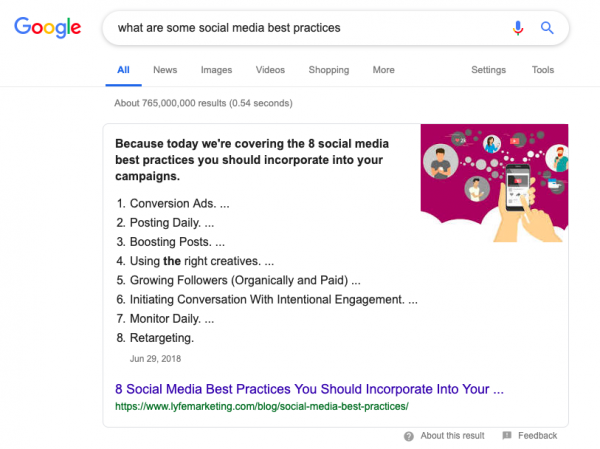How Voice Search Will Change the Digital Marketing Landscape

Summary: Digital marketing is set to change thanks to the changing ways that people search for information online. It’s now time for businesses to optimize their interfaces, platforms, and websites to keep up with the evolving landscape of voice search.
In recent years, voice search has been dominating the search landscape. It has become a convenience to many, allowing everyday users to speak into their devices instead of typing keywords into a search query to get answers. According to PwC, 65% of 25-49-year-olds speak to their voice-enabled devices at least once per day. Speech recognition in our devices has also become extremely complex and precise. Although voice search has been around for some time and is not a completely brand new concept, we’ve experienced a technological breakthrough in recent years with the introduction of voice assistants such as Amazon’s Alexa, Google Assistant, and Siri.
Voice Search Usage Statistics
Mobile users are much quicker to adopt Voice Search – up to three times more likely, in fact. Currently, around 31% of the world’s mobile users make use of Voice Search more than once a week. The majority of Voice Search users – just over half – are below the age of 18.
Voice Search Growth
It is estimated that around half of all the searches done on Google are done via Voice. The increasing adoption of this search option is partly down to the fact that Voice Searches are increasing in accuracy; according to Google, their Voice Searches are 95% accurate.
Voice Search Demographic Statistics
Global smark speaker sales reached an all-time high of 150 million units sold in 2020. And 27% of the online global population is using voice search on mobile. Both of these metrics are on an upward trend. By 2020, the number of households that owned a smart speaker had shot up to 50% of the nation’s broadband-connected homes.
As a result, a majority of devices are now optimized for voice search. What does this mean for brands and businesses? It is predicted that voice search will be a $40B USD channel by 2022. It’s now time for businesses to optimize their interfaces, platforms, and websites to keep up with the evolving landscape of voice search.
How Do I Turn on Voice Search?
If you are using your mobile phone to do a voice search, the process is actually extremely easy. Once you have activated search, you can use it to do actions like getting directions, creating reminders, as well as doing Google searches.
Turn on voice search
If you have an Android phone or tablet, open the Google app and tap More…> Settings > Voice. Under “Hey Google,” tap Voice Match. This will then turn on Hey Google.
Start a voice search
Once Hey Google is activated, every time you want to do a Voice Search, just open the Google App and say “Hey Google” or tap the microphone.
Change your “Hey Google” settings
You can also adjust your Hey Google settings to make Voice Search work better with your preferences. You can set the device so that it will respond to a “Hey Google” prompt when you driving – if you want to access Google Maps. You can also set it so that it will respond when the device is charging or if the screen is one. If you choose, you can set it to “Always On,” which means that you can say “Hey Google,” whether the screen is on or off. You can even unlock features such as allowing the phone to show personal results from your searches, even if the device is locked.
Delete “Hey Google” audio recordings
Recordings of your “Hey Google” searches are saved to your Google Account and you can easily find and delete these through myactivity.google.com.
A Brief History of Google Voice Search
Google Voice Search was launched in 2010, after being developed in Google Labs. Its initial functionality was somewhat more complicated than it is today: you set up the service by calling out a phone number from your contact list, after which you were prompted to say your keywords. Search results would then appear on a blank web page. The Voice Search option has since become a lot more streamlined. Today, it is compatible with most applications and products and is increasingly sensitive to the nuances of tone, pronunciation, and accent. It is now a central part of the Google experience and is rapidly growing in popularity.
Google Voice Search and the Hummingbird Update
When Google introduced Hummingbird, much of the way we search the internet changed – included Voice Search. Hummingbird made it easier for the search engine to pick up semantic nuances in Google searches. Google’s algorithms had always struggled to discern implied meanings or user intent, but Hummingbird has made this increasingly possible. Google can now pick up on the intent in vague searches and provide better search results – this goes for Voice Searches too.
Integration in other Google products
Google Maps with voice search
Google first enabled Voice Search for Google Maps on the Blackberry Pearl – even before Voice Search was properly launched on the search engine itself. It is now fully integrated with the app, making it much easier to search for directions while driving.
Google Mobile App with voice search
Google Mobile was first updated for Voice Search back in 2008 on iPhone. About a year later, mobile models such as the MyTouch 3G from T-Mobile began to feature one-touch Voice Search, which is now a common and ubiquitous feature across many different handset models.
How to Optimize for Voice Search
Here is how voice search will change the digital marketing landscape and what you can do to prepare for it:
Google Voice Search Prioritizes Featured Snippets

When you ask a voice assistant a question, they will read the featured snippet of your search query. If you’re not too familiar with featured snippets, they are search results that are featured at the top of Google’s organic results on SERPs (Search Engine Results Pages). It’s important to understand why you need to start caring about On-SERP SEO so that you can begin effectively optimizing your content to attain a featured snippet on Google’s search engine results page. Businesses need to start accounting for a voice strategy and optimize their content for voice search.
Tips to organize your content for SERPs using Voice Search SEO:
- Create content to answer specific questions
- Organize your content in a question and answer format
- Make sure to create high-quality content
Looking to the future, featured snippets will be more valued and there will only be more competition to win a spot at the top of search engines.
Resources on the Devices and Platforms that Use Voice Control/Voice Search
Each tech company has developed its own Voice Search platforms and devices. Let’s take a look at each one of these resources and how they work.
Siri
Siri is Apple’s voice-enabled assistant, available on all the company’s devices. It is an extremely useful tool – one that many users may not use to its fullest extent. Through voice-activated commands, it can search for all kinds of information, send messages, set reminders and appointments, and more. Siri is designed to prompt you to rephrase and narrow your searches if it doesn’t understand your query.
Google Home is the search giant’s addition to the smart speaker market. It runs with Google’s voice-activated helper. It is operated via the “Hey Google” or “OK Google” wake words you are probably familiar with from your mobile devices.
Alexa
Alexa is Amazon’s equivalent to Siri and Google Home. It is the voice-activated assistant you will find on Amazon’s smart speaker, the Echo. The Amazon Echo has quite a deep and wide range of features and capabilities, from playing local radio stations to making calls to people on your contact list. It allows you to control your TV/AV system with your voice, and much more.
Cortana
Microsoft entered the Voice Search/ Voice Assistant market relatively late, introducing Cortana in 2014. Cortana has a sophisticated algorithm that enables it to learn your habits and preferences as you use it. As well as offering web searches, it can also arrange your daily activities for you. It is available on all Microsoft phones.
The Semantics of Search Will Change
When users search by voice, they often use a more conversational tone. While users may be typing “Brooklyn weather” when conducting a text search, they may ask “What is the weather in Brooklyn?” instead when conducting a voice search. More often than not, users are more likely to phrase queries as a question. Since voice searches are more conversational and natural in nature, it will prioritize the semantics of search queries. As a result, this will affect the digital marketing landscape and marketers will need to reevaluate the keywords used in their content and overall marketing strategy.
Instead of using short keywords in your SEO strategy, make use of long-tail keywords and direct answers to users’ most common questions. It’s time to start paying attention to how your consumers talk. Brands and businesses will need to take into account the tone, word choice, and phrasing used in voice search in this voice search revolution. Reevaluating your content’s keywords to adapt to voice search will help your website rank higher on search engines or earn featured snippets.
Voice Search Will Grow the Mobile-Friendly Environment

People are no longer only searching on their desktops. Hands-free capabilities that come along with mobile devices encourage users who are always on the go to utilize voice search. Whether you’re cooking or driving, voice search and mobile go hand in hand as a convenient tool for consumers’ everyday life.
With users always on the go, voice search is only going to continue to dominate the mobile environment.
Brands and businesses need to ensure that their websites and content are optimized for mobile. It’s time to adopt a mobile-first mindset. Set your business up for success and stay ahead of the game. Around 70% of consumers are more likely to purchase from a business with a mobile-friendly website. From a marketer’s standpoint, it is your responsibility to make sure that your business’ interfaces, websites, and platforms are all optimized for mobile.
Key considerations to become more mobile-friendly:
- Improve your web pages’ loading times
- Incorporate vertical content and use a larger text
- Redesign pop-ups for mobile devices
- Resize buttons and CTAs (Call to Actions) for mobile
- Make information easier for people to find
It’s time to think with a mobile-first mindset if you want to set yourself up for success in this changing landscape. Work with your teams to develop mobile-friendly interfaces to stay ahead of the game.
Google Voice Search Will Place a Larger Emphasis on Local SEO

Many people who are using voice search use it to search up local things in their area. Where is the closest gas station near me? Top 10 Italian restaurants near me? Nearly 22% of voice search queries are seeking location-based content. Local businesses, retailers, and boutiques should take advantage of this opportunity to build a local voice search SEO strategy. A local voice search SEO strategy can ultimately help drive traffic to your website and boost sales. Not considering local SEO is just another missed opportunity.
Tips to Improve your Local SEO
Targeting Voice Search as well as standard search in your local SEO is a great way to ensure that customers near you have access to your information and are likely to find it through a quick search, either on their mobile phones or smart speakers.
User intent and voice search
It is very important that you bear user intent in mind as you create and optimize content for Voice Search. A good way to approach this is to try to pre-empt frequently asked questions and then provide the answers. Just like with written content, you still have to make your essential information clear and easy for Google’s spiders to parse. Think about such common search items as your business’s address, shipping policies, or product details – then create content that a Voice Search will easily be able to turn up and recite.
Optimizing for specific search engines
The way things currently stand, with Google dominating the search engine market, there is little use in optimizing your content for specific search engines. The nuances between Google, DuckDuckGo, and others will ultimately have little effect on your optimization efforts since Google sets the standards for search engine function anyway. Rather create excellent content, then use carefully researched SEO measures that will get it picked up in searches across the board – both standard searches and Voice Searches.
Use schema metadata
Schema is a useful tool for making your content even easier for Google to understand and sort. It enables you to create metadata about your content that “describes” your website and its uses. It is an extremely powerful SEO tool that is somewhat underused at the moment, and it will put you ahead of the curve.
Target and bid on long-tail keywords
Long-tail keywords are as effective in Voice Search as in conventional searches. These are search terms that are longer than the typical search query, and they are usually much more specific. The added advantage in using thee for voice search is that they are more in line with the way people talk, and thus more likely to match a Voice Search query than a common short-tail keyword would be.
Update your Google My Business listing
You should keep your Google My Business listing up to date anyway, but doing so will definitely give you the edge when it comes to Voice Search. More complete business information makes your site more relevant to users and will thus get sorted nearer to the top of the search results, where your Voice Search app is more likely to find it.
Utilize Google Ads’ location extensions
Using Google Ads’ location extensions allows you to display all your relevant business and contact info alongside your ads. Doing so is crucial if you want to make a strong showing in those “near me searches.” Make sure that you include all of the right info in the extensions and it will improve your showing in local searches.
Use Google Maps local search ads
Local search ads in Google Maps are a wonderfully effective, unobtrusive way of bringing your business to the attention of local would-be customers. Your ads will come up in organic results across all platforms and is a great help in getting more people to visit or call your business.
Conclusion
Keep in mind the key considerations in today’s evolving search landscape. Optimizing your content for voice search is definitely one of the content marketing ideas to try in 2021. Seek out voice search optimization services and solutions and work to build out an effective voice search strategy that will help build your brand in the long term.
About the Author
Rick spent 20 years in the insurance industry in finance, primarily developing reporting platforms for B & C stakeholders. His ability to speak to consumers of data (managers and analysts) and translate their needs to programmers led him to start his own digital marketing agency in 2004 to develop data driven solutions for business owners.
The Best Digital Marketing Insight and Advice
We are committed to protecting your privacy. For more info, please review our Privacy and Cookie Policies. You may unsubscribe at any time.
Don’t stop the learning now!

Retention Marketing: Building Long-Term Customer Relationships

10 AI Trends Transforming Business in 2025: Insights from WSI Experts
